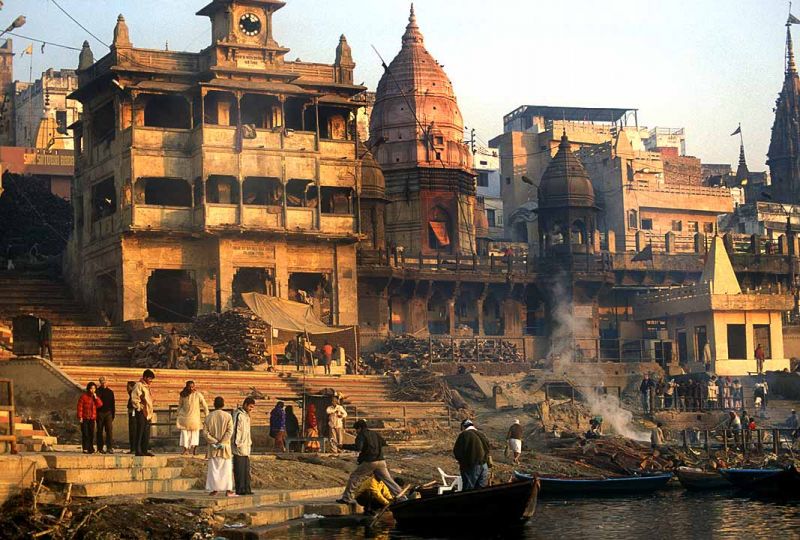Crematoriums Along Ganga Go Eco-friendly
Published on by Water Network Research, Official research team of The Water Network in Government
In a first of its kind initiative, 'green' crematoriums are planned to be built in villages along the Ganga (which have been branded as Ganga grams under the Namami Gange project).

Varanasi cremation
These crematoriums, which will come up in villages along the river at Rishikesh, Haridwar, Uttarkashi and Gangotri will offer 'ecologically-responsible cremation' in which less wood will be utilised besides other safeguards to ensure that the environment and the holy river is not polluted as a result of the cremation process.
Sources familiar with the development told TOI that while conventional crematoriums consume upto 600 kg of wood per body, green crematoriums will limit this amount to only 100 kg in order to ensure less trees are cut, and carbon emissions are reduced.
The cremation, the sources added, would be done using a specially created "pyre oven" which would use less wood but generate enough heat to burn the body effectively.
"The special pyre ovens are designed to direct maximum heat near the head and waist parts of the body since these body parts require more time and intensity of heat to burn. Therefore, even with less wood fuel, the cremation can be done properly," said AK Saxena, technical advisor of the National Ganga River Basin Authority which is overseeing the project.
In Uttarakhand, the project will be undertaken under the supervision of Parmarth Niketan, the largest ahram in Rishikesh whose head, Swami Chidanand Saraswati has been helming the Global Interfaith WASH Alliance, an initiative to provide clean water, sanitation and hygiene (WASH) for all.
Speaking to TOI, Saraswati said, "The ecosystem of the Ganga is greatly endangered currently and needs urgent attention. After making villages along its banks ODF (open defecation free), the next step is ensuring zero cremations in the open along the Ganga. The green crematoriums initiative will prevent the river from getting polluted due to the material that flows into it after a typical cremation.
According to estimates, each cremation results in generation of several tonnes of ash and carbon dioxide. All of this is dumped into the Ganga in case of cremations that happen along the banks of the river.
Read more: Times of India
Media
Taxonomy
- Water Pollution
- Contaminant Removal
- River Studies
- Pollution
- River Restoration
- Water Pollution Control
- Pollution
2 Comments
-
I do not agree with Mr. Punj idea as we had already polluted Ganga in the name of relegious activities. What aastha we are talking about if their is no Ganga . Ganga as we belive to be pure and in its natural ecological system.
I personaly belive that we should have a separate structure/ Space for all relegius activities. Where water from River Ganga is taken and be treated after used and then disposed off through recycling only.
We must consider all factors contributing to river pollution and riverside cremation is one of these if we tackle this will certainly improve the situation.
I agree with you about stopping industrial pollution yes this is also a significant contributor . We must advise all stake holder not to dischage treated waste water in to the river. Instead they be advised to make provisons for recycling of treated water.
We must also look in to Rain water harvesting in the cities at river side. The strom water which carries all the filth to the river must be stopped.
1 Comment reply
-
Sir, Yes , Its a fact.. I do agree with it ..
-
-
Govt. dares tinker with beliefs of masses rather than providing visible stoppage to influent pollutants that eyes of the masses see !Mythological beliefs are here to stay as constitution of India also protects them. Alternative places for cremation will take years to become popular. However, there are clear technological options available that Govt.s can use to put an immediate halt to dumping of pollutants and untreated sewerage in to Ganges and its river system as doing so and allowing it to continue to happen, is totally against belief and faith of masses that Ganges is a holy river with so much to offer and its water is pure and holy.